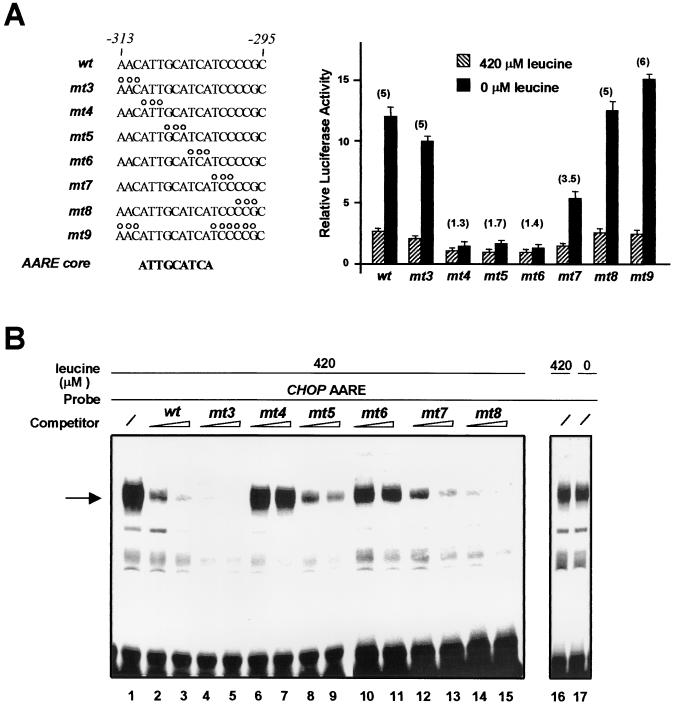FIG. 4.
Identification of a CHOP AARE core sequence. (A) HeLa cells were transfected with LUC constructs containing a single copy of native or mutant CHOP AARE (−313 to −295) inserted 5′ to the TK promoter. The open circles represent the positions of substitution mutations in the 19-bp CHOP AARE sequence. The minimum AARE core sequence is shown in bold letters. Twenty-four hours after transfection, cells were incubated for 16 h in DMEM F12 (420 μM leucine) or in DMEM F12 lacking leucine (0 μM leucine) and then were harvested for preparation of cell extracts and determination of LUC activity. Relative LUC activities were determined as described in Materials and Methods. The relative fold induction, defined as the ratio of the relative LUC activity of leucine-starved cells to unstarved cells, is indicated in parentheses. Each data point represents the mean of at least three independent experiments performed in triplicate. (B) Gel mobility shift assays of nuclear extracts from HeLa cells incubated for 16 h in DMEM F12 (420 μM leucine) or in DMEM F12 lacking leucine (0 μM leucine) in the presence of the 19-bp CHOP AARE probe. The AARE probe carried sequences −313 to −295 (wild type). The 19-bp CHOP AARE and different mutated AARE oligonucleotides (mt3 to 8) were used as competitors at a 25- or 50-fold molar excess relative to the probe. The specific DNA-protein complex is indicated by an arrow.

